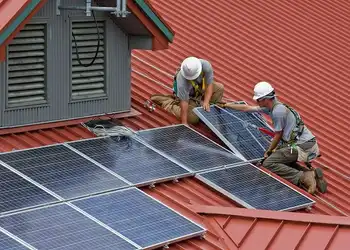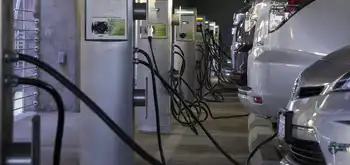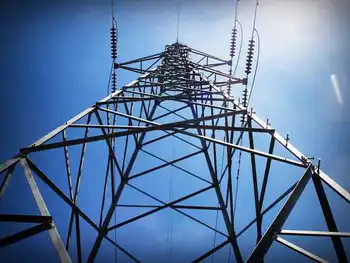Wind power unreliable for shattered Haiti
MONTREAL, QUEBEC - Canada's Foreign Affairs Minister is eyeing the potential for wind power along Haiti's coastline as part of the effort to improve the earthquake ravaged country's capacity for power production.
Foreign Affairs Minister Lawrence Cannon said technology will be an important element of rebuilding in Haiti after its infrastructure was devastated in the January 12 earthquake that has left most of the Caribbean country in ruins.
Wind power could reduce the country's dependence on fossil fuels, the minister said before a conference on Haitian reconstruction in Montreal.
But experts say that while wind energy should be part of a long-term energy strategy for Haiti, it is too expensive and unreliable as a short-term source of power to fuel reconstruction.
Andrew Thompson, a senior fellow at the Centre for International Governance Innovation,who specializes in Haiti, said Cannon was not the first person to raise wind power as an option for Haiti.
The island's geography and a strong air stream makes wind power a viable possibility, he said. But he added, it requires a massive capital investment and a tremendous amount of infrastructure.
"There's no silver bullet for Haiti's energy needs. Wind would be one of a series of different options, I think itÂ’s worth considering solar power as well."
Before the quake struck, non-profit groups were installing solar panels on the roofs of Haitian schools, as a self-sustaining source of power that doesn't require a massive infrastructure investment like wind farms, he said.
Haiti needs to consider several other sources of energy, including importing charcoal from a neighbouring country. The country's forests have been plundered to supply charcoal for cooking for the 80 per cent of Haitians who are desperately poor and cannot afford electricity.
Haiti's mainly thermal and hydroelectric plants supply only a fraction of the energy required and even those who can afford to be on the grid receive power for only half the day. Many rely on expensive and polluting diesel generators.
"One of the challenges for Haiti will be to engage in a reforestation plan, while at the same time offering people an alternative source of fuel for cooking their food so that trees aren't cut down again," he said.
"And that's the appeal of something like wind or solar... it's potentially a source of energy that in time could replace charcoal."
Robert Evans, a mechanical engineering professor at the University of British Columbia, said wind is an expensive type of energy production, that has been heavily subsidized in countries where it has been integrated.
Wind power is intermittent and works at full power capacity only one-third of the time fossil fuel plants do, and a back up source of power would be crucial, he said.
"It really only makes sense to integrate it into an existing situation where you've got the availability of back up power of some kind."
Lawrence Solomon, executive director of Energy Probe said being green is an extravagance Haiti can't afford.
"For Haiti that needs to rebuild its infrastructure, this is the last thing they need, they need to get their economy up so they can have jobs, they don't need to be wasting money on an unreliable power source."
But Robert Hornung, president of the Canadian Wind Energy Association said small island states are ideal for wind farms because wind is stronger in areas where land meets sea, adding Cuba and other Caribbean countries have already invested in wind energy.
"There are examples of how wind is making real contributions in countries that face those sort of climatic circumstances and development circumstances," he said.
Hornung said Cannon's suggestion could also represent an opportunity for Canada's small wind turbine manufacturers.
"We hope its an indication of role that wind energy can play... there's a fairly broad consensus that if you're looking to improve the environmental sustainability of your electricity system that wind is a sound choice."
Haitian Prime Minister Jean-Max Bellerive told delegates in Montreal his government has set up six committees to deal with the crisis, including sanitation and energy. But it could take as long as three or four months to restore electricity in Port-au-Prince, which is now using generators.
Even before the quake destroyed Haiti's infrastructure, it had the lowest coverage of electricity in the Western Hemisphere, according to a 2006 study from the Inter-American Development Bank. Only about 10 per cent of its 8.5 million people had access to limited services.
Related News

Net-Zero Emissions Might Not Be Possible Without Nuclear Power
LONDON - Declining solar, wind, and battery technology costs are helping to grow the share of renewables in the world’s power mix to the point that governments are pledging net-zero emission electricity generation in two to three decades to fight global warming.
Yet, electricity grids will continue to require stable baseload to incorporate growing shares of renewable energy sources and ensure lights are on even when the sun doesn’t shine, or the wind doesn’t blow. Until battery technology evolves enough—and costs fall far enough—to allow massive storage and deployment of net-zero electricity to the grid, the systems will continue to need…




